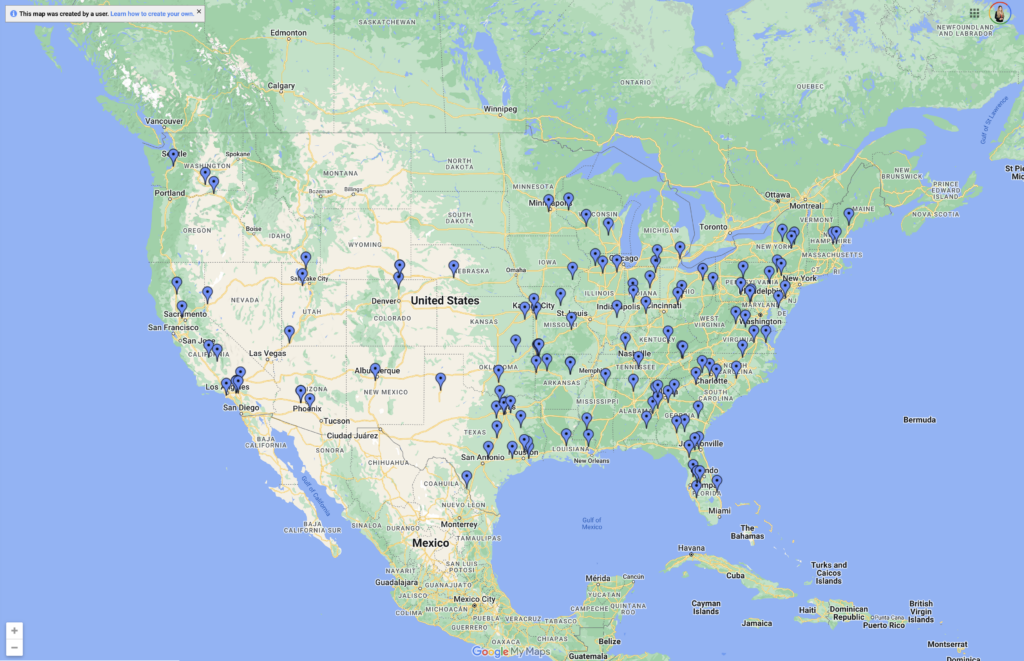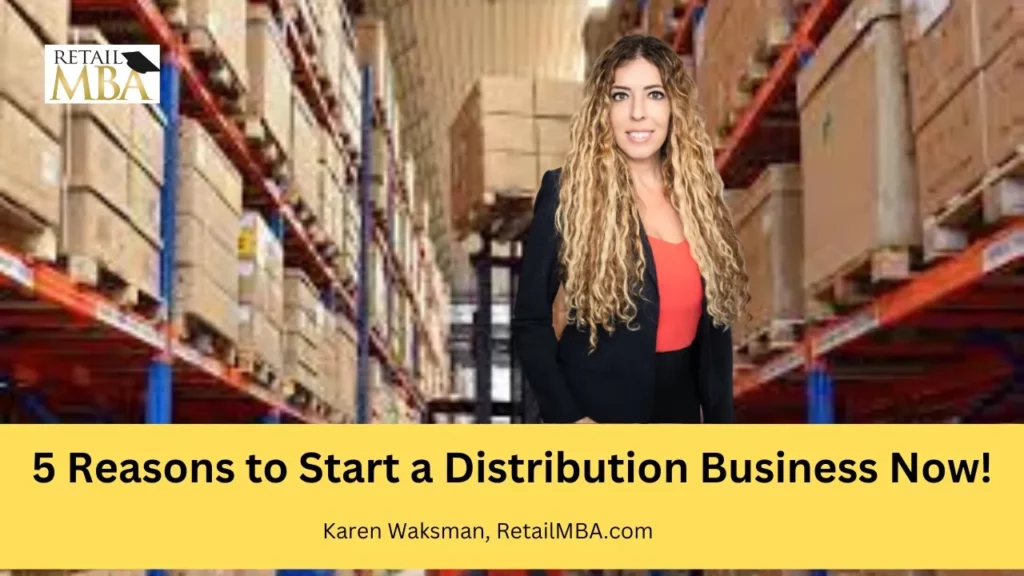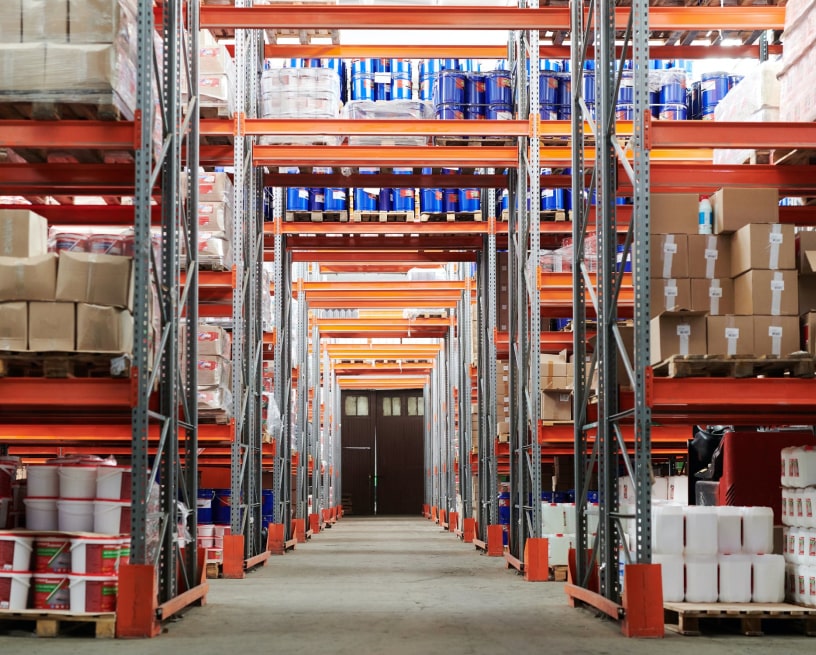Distributor Centers

The Benefits of Distribution Centers
Distribution centers are large facilities stocked with goods that are transported directly to retailers, wholesalers and customers for shipment. By eliminating multiple storage locations and eliminating procedural flaws that could delay orders and cause customer dissatisfaction, distribution centers offer an efficient method for meeting demand for product deliveries.
Goods that arrive via LTL or FTL freight shipping must first be sorted and organized so teams can fulfill orders from multiple retail locations at once.
Warehouse Management Systems
Warehouse management systems (WMSs) track the storage and movement of items within a distribution center, helping ensure customers receive their products quickly and as promised. Warehouses may use WMSs to streamline inbound/outbound processes, reduce labor costs, maximize space efficiency and increase productivity and efficiency.
WMS software automates manual and paper-based processes, making it easier for employees to complete their tasks and focus on their core duties. WMS can identify bottlenecks in workflow by analyzing data from warehouse operations, inventory, customer orders and customer returns; while providing a clear view of inventory for confident business decisions.
Utilizing WMSs to optimize internal warehouse operations allows businesses to pass along time and cost savings to delivery partners, increasing profitability. Inbound receipts can be processed more efficiently reducing delivery times; outbound shipments can be completed more rapidly with reduced errors and delays for faster deliveries and higher customer satisfaction levels.
WMSs are designed to be flexible, enabling companies to adapt their WMS as their needs and processes evolve. Implementation may occur gradually over time to allow for regular updates that keep warehouse operations efficient even as changes occur.
WMS systems often exist in the cloud, enabling instant updates. This eliminates the need for large IT teams and makes it easy for companies to take advantage of new technology as it becomes available, while helping reduce operational expenses by decreasing hardware requirements and storage needs.
Warehouses can use WMS to efficiently manage numerous processes, from tracking item locations and selecting the ideal storage spot for each product to employee performance monitoring and training. WMS software also enables warehouse designers to develop layouts which reduce trips required to retrieve or place items, thereby decreasing waste while increasing profits per square foot.
Modern warehouse management system (WMS) tools are widely utilized by businesses of all types and sizes – ranging from online retailers and manufacturers, third-party logistics (3PL) providers, cold storage facilities, pharmaceutical firms and cold storage businesses – as they enhance global supply chains by increasing inventory visibility, streamlining warehouse operations and streamlining the flow of products between vendors and retailers.
Order Picking
Order picking is the first step to fulfilling customer orders and can have a major effect on the success of warehouse operations. Picking errors can hinder other steps of order fulfillment such as shipment delivery and post-sale activities; thus, improving overall warehouse picking quality should be prioritized in order to increase productivity while meeting customer satisfaction goals.
No matter if your facility is a production warehouse, distribution center, or fulfillment center; order picking is key to business operations and must meet business requirements efficiently and cost effectively. While there is no one size fits all solution, most companies use one or more picking methods together in order to meet operation goals of their facility. Which picking method you opt for depends on a range of factors including order profile characteristics; distribution between single line item orders and multiple item orders; physical layout issues in your facility etc.
When choosing an order picking method, it’s essential to keep in mind how often each picker must travel between locations to retrieve items. An efficient way of making this decision is arranging your facility so that inventory flows logically from one functional area to the next; this can prevent backtracking and save time for your workers. Utilizing bins, totes or dividers for storage also reduces how often pickers must traverse warehouse aisles thus increasing productivity while saving them time in doing so.
Most order picking processes utilize either batch, zone or wave picking techniques. Batch picking involves grouping similar orders together and picking by one picker at the same time to reduce worker workload during their shift. Zone picking utilizes similar concepts by organizing orders into specific, physical zones; pickers are assigned zones in which to fill each order they receive from customers. In wave picking, orders are individually picked in waves with pickers taking one order per zone at once.
Returns Management
Return policies of any organization play an integral role in customer satisfaction, whether that involves refunds or exchanges. Customers want their returns processed quickly and efficiently in order to maintain repeat business and increase revenue; conversely, an inadequate returns process can deter customers and damage brand image.
Reverse logistics involve many moving parts. From the outset, it’s critical that you can track and record reasons for returns using a warehouse management system (WMS), creating an efficient process of handling them. You could also set aside an area specifically for receiving returned products while assigning employees accordingly as volume increases during peak seasons – using forecasting tools as additional insurance that your inventory and staff remain sufficient.
Once products arrive at a distribution center, they’re evaluated to see if they meet quality standards and other requirements for returns. This process, known as gatekeeping, is key in reverse logistics as it determines if products should be returned, recycled, resold or even sent out for repair if appropriate.
Successful e-commerce returns management requires seamless process integration and open communication among supply chain partners. By connecting your return process to product information and other data sources, you can reduce company liability and get items back onto shelves faster. Labeling and enterprise data integration can also help maintain control throughout the return process.
When handling large numbers of returns, it’s essential that operations run efficiently and smoothly. A slow or unclear returns process can negatively impact customer experience, discouraging people from shopping with your company again in the future. Aligning processes with your returns policy will allow you to avoid unnecessary costs while increasing customer satisfaction.
Storage
Distribution centers offer much more than short-term product storage: They also provide value-added services such as order fulfillment and packaging for direct-to-consumer (DTC) brands as they expand, needing logistics partners that can manage back office functions such as warehousing, order fulfillment and returns management.
Distribution centers must possess adequate warehouse storage space and utilize suitable equipment in order to fulfill orders successfully. Pallet racking is one popular storage choice used at distribution centers to maximize space utilization while quickly providing products. Shelving can also be easily adjusted to store different sizes and product types – shelving also works great when it comes to small light items that are easy to pick up and ship!
Once inventory is stored in a distribution center, fulfillment begins. When orders are placed online via an order fulfillment system like WMS or eCommerce platforms like Shopify or Magento, an automated fulfillment center sends this data back out for processing; expert fulfillment personnel at this DC then pick, pack and ship their item directly to their customer.
Cross-docking warehouses specialize in swiftly moving goods between trucks, often serving as intermediary between regional warehouses and their point of sale, thus helping reduce shipping costs and speed delivery times. Other distribution centers focus on bulk sales to retailers or wholesalers and may operate on a smaller scale than retail distribution centers.
Young ecommerce brands may find the cost of maintaining a warehouse prohibitive, especially if they need to invest in expensive technology, hire and train staff, or purchase storage space. Partnering with a 3PL that provides distribution center and fulfillment capabilities may be more cost-effective than trying to manage logistics in-house. A 3PL with global distribution capabilities can utilize best-of-breed warehouse management systems to help avoid under-stocking or overstocking issues, automate reorder points, track inventory trends more efficiently, as well as provide return management services that both simplify the return experience for customers while saving both time and money for both parties involved.
Want to learn more about Starting a Distribution Business? Click here to learn more: https://www.retailmba.com/distribution-business-how-to-get-your-product-in-stores

Step-by-step training on how to sell to retail chains!
We explain exactly how to do that and how to get started today. I’ve taught over 100,000 of companies over the years across the globe on how to get your products to the stores. And so we’re here to support you. Or please subscribe to our Youtube channel and or be on the lookout for additional training that we create.
We are here to expedite the process of generating revenue with your physical products and that’s what we’re all about. Take a look at our advanced training, live events, certification programs and so much more.
In this training, I will discuss some of the things to think about when approaching a retailer to sell your products and become a vendor. Hope it helps! 🙂
Karen Waksman,
Retail MBA
Questions? Contact Us!
1-855-Retail-2 (Call or Text)
Email: info@retailmba.com
Retail MBA provides a step-by-step formula on How to Sell to Major Retailers, Online Retailers, Smaller Retailers, Catalogs and More. No Experience Required! These solutions continue to convert for clients year-over-year! These are Time-Tested and Proven Strategies that we utilize ourselves when going after stores! Everything we teach, we test. Want access to these formulas? ANY one of our programs and coaching systems gives you access to them now. With that said…
Here are 5 Easy Ways to Work with Us:
1) Free Training – If You Would Like to Join Our Next FREE Webinar Training Called “Retail Chain Store Secrets – How to Sell to Major Retail Chains. No Experience Required” Then Sign Up NOW To Learn All About Selling into Retail Chains By Clicking Here!
2) Retail MBA Year Long Coaching and Training System – Our Year Long Coaching and Training System with Karen Waksman is POWERFUL! This is our most popular training and coaching system! We walk you through how to approach, pitch and sell to retail chains and we coach you along the way! Join us by Clicking Here!
3) Masterclass Intensives – Want to Join our Next 4 Week Elite Retail MBA Masterclass Intensive? These Intensives Are EPIC for people who Love Fast Paced Learning – Homework, Retail Coaching, Developing Your Strategy, Buyers Contacts and More! These Events Are Held Every Quarter. Join us by Clicking Here!
4) Done-for-You Program – If You Want Karen Waksman and Her Team to Reach Out to Your Top Dream Retail Chains On Your Behalf – And You Have a Retail-Ready Product, Check Out our Epic Done-For-You Service by Clicking Here!
5) In Person Events – If You Want to Learn LIVE and Meet Karen Waksman in Person at Our Next “America’s Next Retail Product: LIVE Event with Other Like-Minded Individuals in Beautiful San Diego, CA! We Would LOVE to Have You Join Us by Clicking Here!


